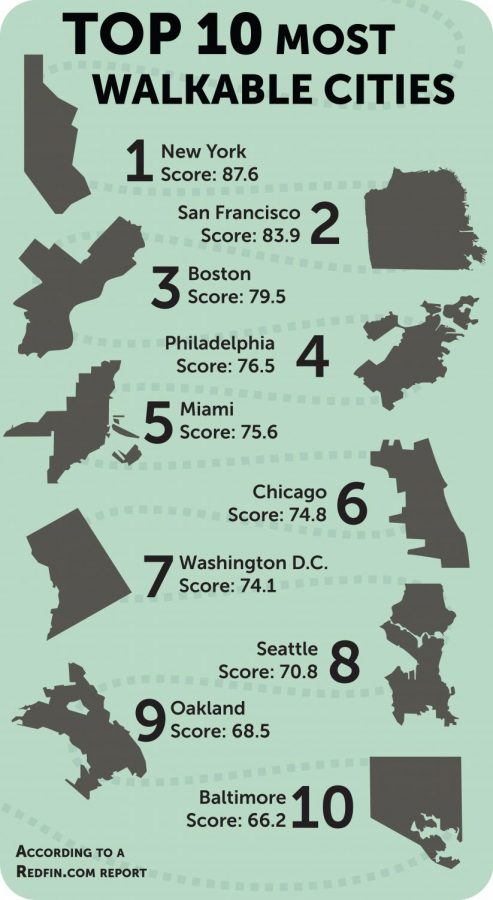Walk Score ranks Chicago sixth most-walkable city
April 27, 2015
Chicago has been ranked the sixth most-walkable city in the U.S. by Walk Score, an organization run by real estate company Redfin that tracks and promotes walkable cities.
A study released April 7 by Walk Score ranked U.S. cities by pedestrians’ ability to travel on foot. New York claimed the No. 1 spot with a score of 87.6, San Francisco came in second with 83.9 and Chicago’s score was sixth-best with 74.8. In addition to rating Chicago’s overall score, Walk Score also broke down Chicago’s data by neighborhood, ranking the West Loop as the most walkable with a score of 96, according to the study.
To calculate a specific area’s rating, Walk Score uses a system that analyzes the travel time and density of city blocks, said Rachel Musiker, a Walk Score spokesperson. The number of businesses in the area also plays a large role in its walkability, as these businesses attract commercial activity, Musiker said.
“We use an algorithm that takes into account a lot of different kinds of data,” Musiker said. “That includes travel time, pedestrian friendliness, the density of city blocks and how many choices of restaurants, bars and coffee shops are nearby.”
In an effort to keep raising Chicago’s score, Kyle Whitehead, campaign director for the Active Transportation Alliance in Chicago, said people need to get out of their personal vehicles and utilize other types of transportation, such as biking and walking. However, he said Chicago’s city government must allocate more money to organizations such as the ATA to ensure that street intersections are safer for pedestrians.
“One of the things we try to do as an organization is bring attention to walkability issues and advocate to legislators to invest more money in [the] infrastructure and make the environment better for everybody using the road,” Whitehead said.
Whitehead said having businesses and restaurants in the city that are easily accessible to residents will increase Chicago’s walk score because the commercial activity of these businesses is directly affected by how many people are walking past them.
In addition, Whitehead said business owners are beginning to realize the prosperity of their business is based on accessibility.
“Especially over the last several years, businesses are recognizing that contributing and advocating for improving access to their business, and specifically pedestrian and bike access, can be beneficial to their private life,” Whitehead said.
Steve Schlickman, executive director at the University of Illinois at Chicago’s Urban Transportation Center, said having a high walkability rate will increase the number of people visiting and living in Chicago because attractions and venues will be easily accessible.
“I think having a high score on walkability [means] a city is more livable,” Schlickman said. “One of the things I hear from visitors to our city is the fact that it’s an easy place to walk around.”








